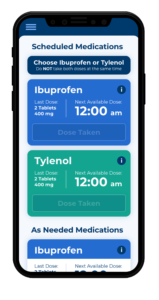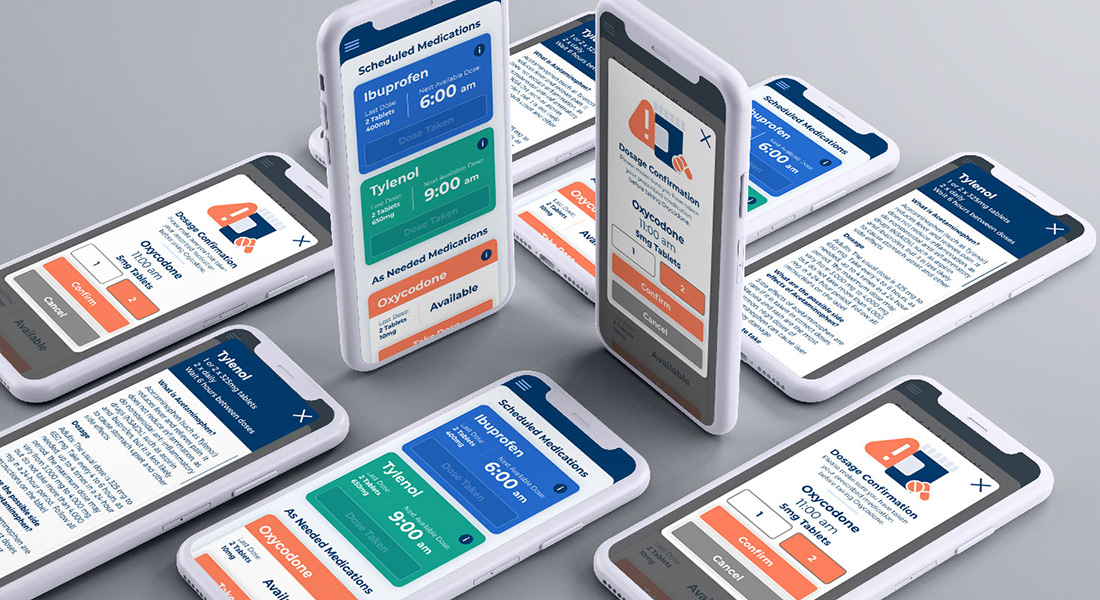Michigan Medicine: Pain Pilot
A mobile application that is helping researchers combat the global opioid addiction crisis
![]()
 RESULTS:
RESULTS:
Effective pain management is critical to delivering excellence in care and the best possible surgical outcomes, and yet it is critical that pain medications are prescribed and taken responsibly. In pursuit of strategies to combat the global opioid addiction crisis, Michigan Medicine’s General Surgery team designed a research study to gain visibility into how people use over-the-counter (OTC) and prescription opioid pain medications. They approached NewFoundry to develop an application central to the study, enabling post-operative patients to report how they use these medications and the research team to understand the resulting effect on the pain curve. The result is Pain Pilot, a mobile app with a patient-friendly frontend experience developed within NewFoundry’s Kestrel Medical and a secure HIPAA-compliant backend system used by Michigan Medicine researchers to conduct the study.
The ideal scenario following surgical discharge is that a patient is able to manage pain exclusively with OTC medications and by taking the least amount necessary; if opioids must be used, it is minimally and they are discontinued as quickly as possible during the recovery journey. Pain Pilot is designed to encourage the ideal scenario while measuring actual usage and pain management outcomes.
Using the app, the care team specifies the patient’s medication protocol. Once at home, the patient consults the app for information about their pain medication options, the time that each may be safely taken, and how much may be safely taken. OTCs (e.g., ibuprofen, Tylenol) are prominently featured as “scheduled” options to encourage their use first, while opioids (e.g., oxycodone) are “as needed medications” to gently discourage their use. With a couple of taps, the patient indicates which medication and dose they are taking. The app prompts the patient to log a pain score (1-10) each time medication is taken or at other intervals established by the research team.
The app includes encouragement and education that helps patients continue to participate in the study and use pain medication responsibly. It monitors trends in the patient’s logged pain scores and prompts the patient to take action accordingly. For example, in response to a trend of high pain scores, the app suggests that the patient call the doctor (and offers to connect the call with a tap). On the other hand, a trend of low pain scores triggers the app to suggest that if the patient is feeling better they should continue OTCs as needed and safely dispose of remaining opioids. In addition, the patient can get information about each medication in the protocol (e.g., how to take, benefits, risks, side effects, warnings, what to do in event of overdose) within the app.
NewFoundry’s role in creating Pain Pilot included fleshing out the application needs and requirements via discovery with Michigan Medicine; writing user stories; designing workflows, wireframes, and mockups; and engineering the app end to end including mobile app development, cloud infrastructure, and HIPAA compliance (user validation and secure handling and anonymizing of private health information).
Based on early success with Pain Pilot, Michigan Medicine has expanded its long-term vision to include working with us to create an entire suite of apps (known as MedGuider) centered on excellence in care and the best possible outcomes for patients.
PROCESS AND DELIVERABLES:

